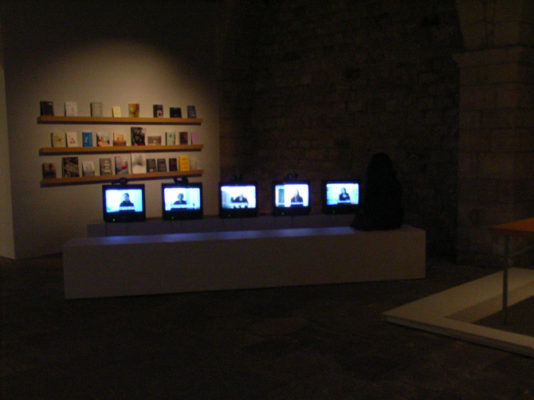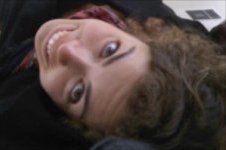Search
To search for an exact match, type the word or phrase you want in quotation marks.
A*DESK has been offering since 2002 contents about criticism and contemporary art. A*DESK has become consolidated thanks to all those who have believed in the project, all those who have followed us, debating, participating and collaborating. Many people have collaborated with A*DESK, and continue to do so. Their efforts, knowledge and belief in the project are what make it grow internationally. At A*DESK we have also generated work for over one hundred professionals in culture, from small collaborations with reviews and classes, to more prolonged and intense collaborations.
At A*DESK we believe in the need for free and universal access to culture and knowledge. We want to carry on being independent, remaining open to more ideas and opinions. If you believe in A*DESK, we need your backing to be able to continue. You can now participate in the project by supporting it. You can choose how much you want to contribute to the project.
You can decide how much you want to bring to the project.

Last 9 March, “Síndrome (Syndrome): Context, modes and structure. Contemporary forms of artistic production in Stockholm” opened in La Capella. Immediately after hearing the title I was struck by three things: the first that this desire to show the structure of an artistic system in an exhibition (something not that common in exhibitions, and much more so in masters analysing contemporary art) seemed really interesting; the second, why Stockholm? Shortly afterwards I discovered that the curator, Martí Manen originally from Barcelona, has lived there for years. The way I see it, the fact that the context is Stockholm isn’t that important. Any other would have been equally as interesting; and thirdly, the Stockholm syndrome? Isn’t that how they describe the people who fall in love with their kidnappers? According to the RAE (Real Academia Española), “syndrome: 2. m. A selection of phenomena that characterise a specific situation, of Stockholm. 1.m. Attitude of a kidnapped person who ends up understanding their captors’ reasons.” In short, what the subtitle of the exhibition announces.
“Síndrome” is not your average exhibition. It breaks with the hierarchy of time and space. To begin with, not all the exhibition takes place in the actual space of La Capella. A documentary that forms part of the exhibition, “Looking for Headless”, will be shown during various days in a business centre in Barcelona. A series of encounters are also taking place during the exhibition, with the Swedish artists meeting up with diverse local agents. These are being recorded and placed on various web pages (amongst which is A*DESK).
On the other hand what is taking place in La Capella also doesn’t respond to any form of linearity, beyond showing fragments of the Swedish context. On entering, on the right, one can see five interviews with directors (all of whom are women) of different cultural spaces in Stockholm: from private spaces such as the gallery Bonniers Konsthal, the state grant agency Iaspis, or Statenskonstråd, the National Council for Public Art. Each one lasts 15 to 25 minutes, so this part forms an invitation to follow the rhythm of an archive more than an exhibition. Certain contradictions can be observed in their responses to the interviews, which is understandable given the different positions that their respective organisations occupy within the local scene. For example, Catrin Lundqvist, of the Moderna Museet (a mixture of MNAC and MACBA), is of the opinion that there is a lot of contact between the institutions, above all in the last 15 years, while Katarina Sjögren, director of the Crystal Gallery, is of the opinion that there ought to be a great deal more. Making this dissension public, ends up being very positive as it visualizes the relations of power and makes a response possible.
Next, we come across the work of five Swedish artists. The exhibition offers a leaflet for each one of them that, in a short paragraph, explains their interests and/or the work presented. There is a clear interest in bringing the public closer to the context. It’s not about showing it so that each person interprets it as best they can, so much as achieving proximity, and a dialogue.
There are two works that particularly drew my attention: the powerful piece by Åsa Cederqvist, “The Cabinet”, that occupies the whole apse of the old church. That is characterised by how the material induces us into a primitive state, where we lose control of ourselves. It is carefully composed out of five screens with a sound umbrella centred on each one. The other piece that drew my attention is quite the opposite, in that it is much more conceptual. Lina Persson proposes the idea, drawn from science fiction, of travelling to the past guided by interviews with the reputed scientist Ronald Mallet. The speculation present in scientific investigation is united to the economic speculation of “Looking for Headless”, as well as the artistic speculation that is proposed by the artist Carl Palm.
Another exhibition or event in the Spanish scene, where something similar has been done, springs to mind: “Asamblea de los Países Bajos”, the platform that Latitudes curated in Arco 2012, where 30 representatives of cultural institutions in Holland each had an hour to show their work and dialogue amongst themselves and with the public of Arco. What about doing something similar in relation to the panorama of Spain or of Barcelona? Quico Peinado, of the gallery Àngels Barcelona, a few days ago talked about how the crisis had united the agents of contemporary art in Barcelona, but that they still remained scattered. I believe that this is a common thought amongst those who form part of the scene. If initiatives like that of Síndrome or the Asamblea were applied to the local scene, a greater and much needed transparency regarding its structures would be achieved, and the agents would benefit from this dialogue.

Raquel Machtus is a nomad by birth. Aside from her enthusiasm for discovering new places in the world, she is also interested in nomadism in situ, that is to say exploring and going deeper into the as yet not established connections between elements within a context. In addition, she thinks that art, analysed through all its facets, offers very interesting perspectives on this nomadism. She’s proposing to go into them in more depth.
"A desk is a dangerous place from which to watch the world" (John Le Carré)